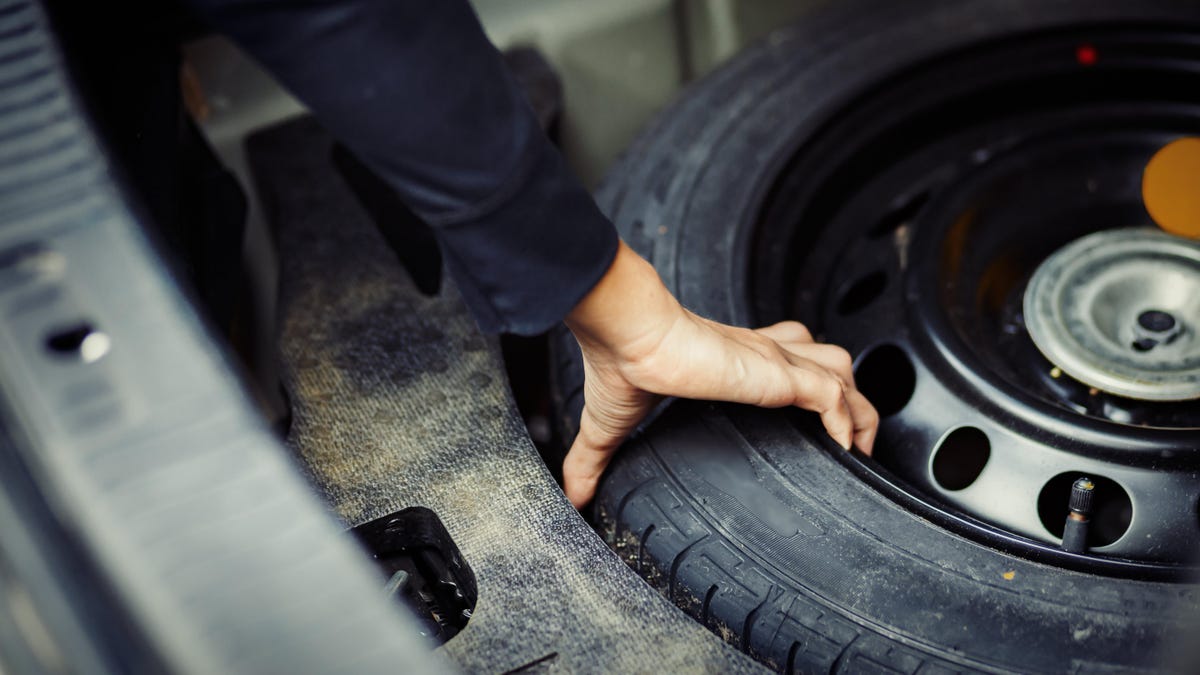This local airline’s answer to making Subang Airport an aviation hub lies in these new jets
SKS Airways, a Malaysian airline based in Subang Airport, has leased 10 Embraer E195-E2 aircrafts that will be delivered in 2024.
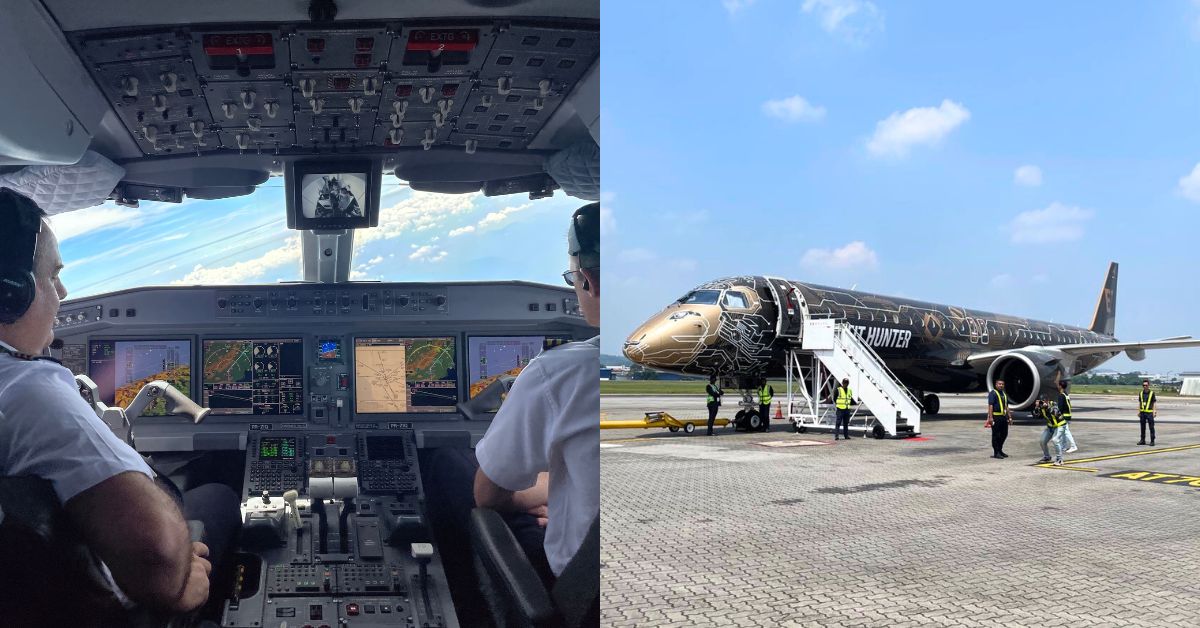
Homegrown airline SKS Airways has given a sneak-peek of the aircraft it will be using to service flights out of the Sultan Abdul Aziz Shah Airport (better known as the Subang Airport) in a media familiarisation event on September 28.
Based in Subang Airport, the commercial airline is a part of the SKS Group. It commenced its first commercial flight on January 25, 2022, specialising in island-hopping services. Currently, the destinations it offers are Pulau Tioman and Pulau Redang.
In May this year, SKS Airways had announced that it had selected the Embraer E195-E2 jets to service its future flights. The airline has already leased 10 of the jets from Embraer.
Embraer is a Brazil-headquartered aerospace company and aircraft manufacturer. Founded in 1969, the company has delivered more than 8,000 aircraft, which is reported by the company to transport over 145 million passengers per year.
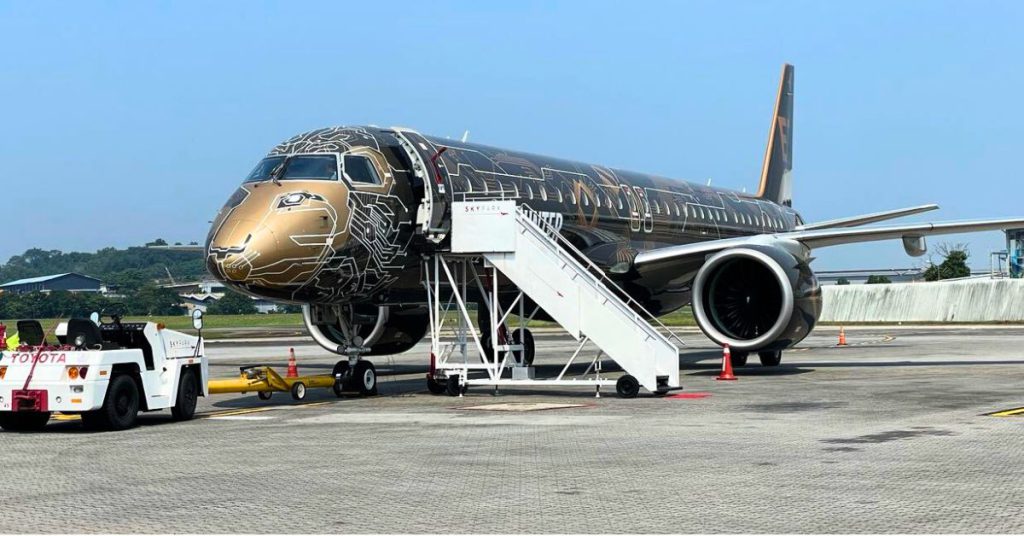 Image Credit: Vulcan Post
Image Credit: Vulcan PostSKS Airways will be the first Southeast Asian operator of the E195-E2 jets.
According to a press release from SKS Airways, the Embraer E195-E2 fleet is a vital component of SKS Airways’s expansion plan and part of its new, soon-to-be-unveiled brand offering.
“In essence, the airline’s key value proposition will be to offer better connectivity and time saved whilst offering convenience as well as comfort for passengers traveling within the region.”
Reinvigorating the Subang airport
Even those who are not frequent travellers will know that in comparison to KLIA, the Subang Airport is not as popular, and even said to be underutilised by industry professionals.
In June 2023, Transport Minister Anthony Loke announced that the ministry has obtained an approval from the cabinet on a business plan proposal to redevelop the airport.
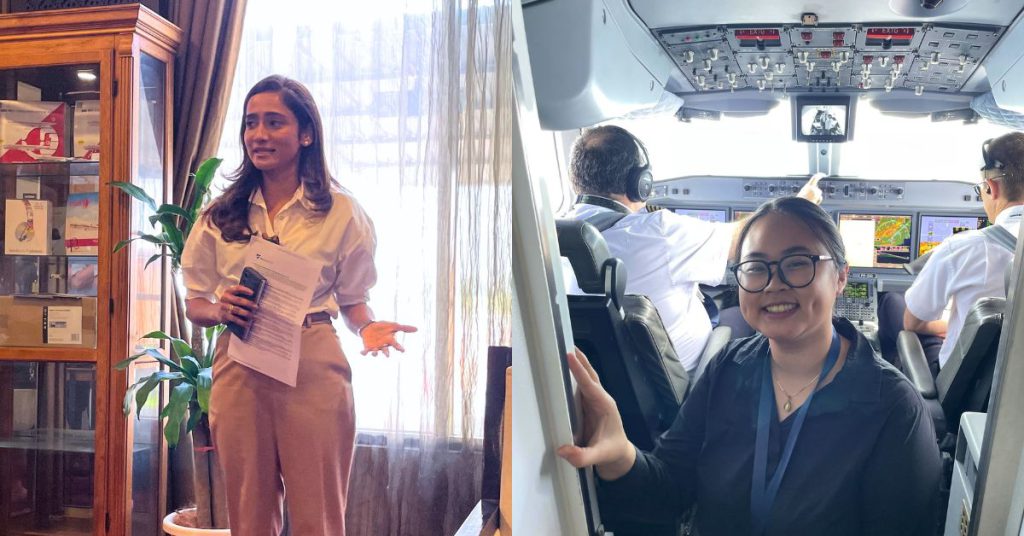 Dzuleira Abu Bakar is the newly appointed CEO / Image Credit: Vulcan Post
Dzuleira Abu Bakar is the newly appointed CEO / Image Credit: Vulcan PostThe plan is dubbed the Subang Airport Regeneration Plan (SARP), and will see the airport redeveloped into a premium city airport and aviation hub, the New Straits Times reported.
Seemingly leveraging this are Embraer and SKS Airways. With the incoming deliveries from Embraer, SKS Airways is set to be the first regional airline operating out of Subang and aims to “reshape the future of aviation by enhancing connectivity within the region”, its corporate profile stated.
Embraer also reports in the book that the E-Jets E2 family of aircraft is the “most suitable aircraft to connect Malaysia” due to its seat capacity of 100 to 150 seats.
During the media familiarisation session, Victor Vieira, the sales director at Embraer, shared, “We believe this aircraft is a gamechanger for this country. Because of its right capacity, it can tap the gap between the turboprops and large-body aircraft that is part of the fleet profiles of airlines in Malaysia.”
“We see many opportunities to optimise the network of the current services, right now the average seat capacity in Malaysia is around 160 and 180 seats, and the average passengers ranges from 120 to 130 seats.”
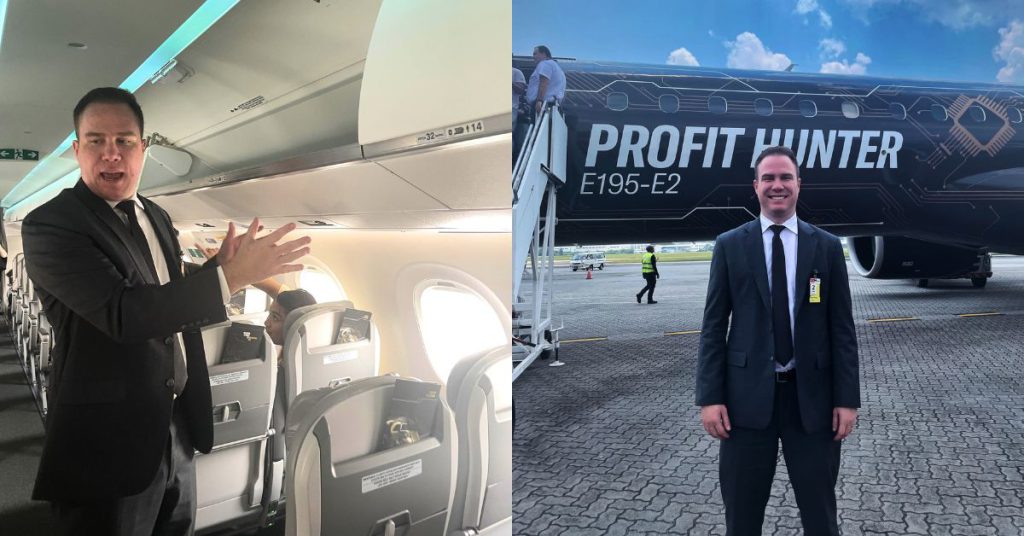 Victor Vieira was present during the demo flight / Image Credit: Vulcan Post
Victor Vieira was present during the demo flight / Image Credit: Vulcan PostNot only can the E-Jets E2 match the current market demand, Victor also stated that it can help open new direct routes that cannot be served efficiently by large-capacity aircraft.
This may be because the aircraft available are too big and the demand from those routes can’t fill all the seats, or perhaps the aircraft doesn’t have the right operational profile for those airports.
“That’s exactly what the E195-E2 can do—to find uncharted markets that the competition cannot serve,” he said.
On top of that, Embraer also believes that its E-Jets E2 provides the ideal economics as it offers lower operating cost per trip compared to popular models flying in Malaysia.
“A total of 30% of Malaysia’s nonstop routes are served with less than one daily frequency—a clear mismatch between aircraft capacity and market demand,” Embraer also wrote in the value proposition book.
“The E-Jets E2 enables airlines to increase frequency in key markets due to a reduced cost base and adequate capacity.”
Less noise and environmental pollution
Increased frequency of flights doesn’t necessarily sound like a good thing, though, when it comes to our environment.
However, the E-Jets E2 reportedly have a smaller carbon footprint, emitting 33% less CO2 with an average demand per flight of 120 passengers in Malaysia, Embraer’s book claims.
The press release also states that the E195-E2 is designed to be compatible with sustainable aviation fuel (SAF), meaning it will mitigate carbon emission and contribute to improvements in air quality by reducing the release of pollutants and particulate matter during flights.
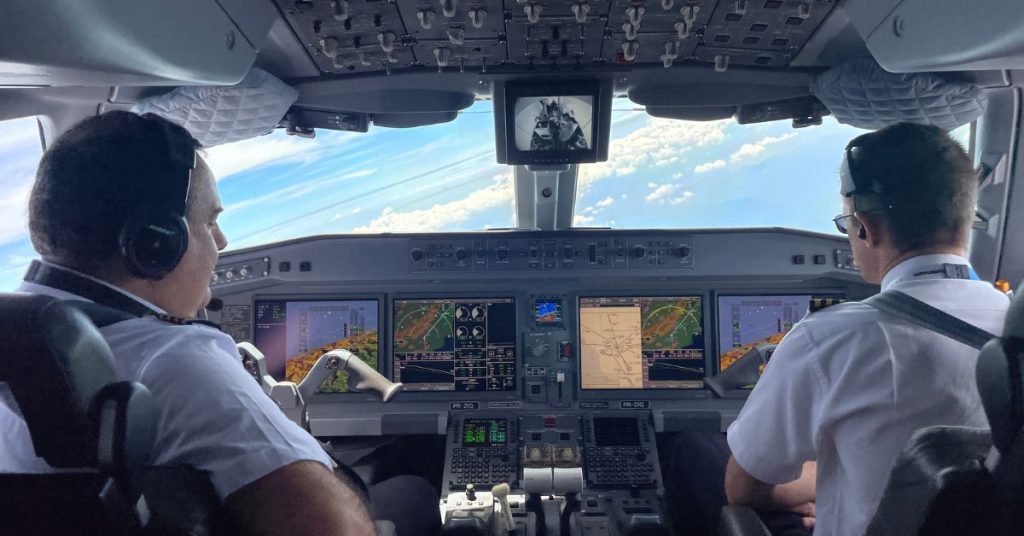 Image Credit: Vulcan Post
Image Credit: Vulcan PostAccording to BP, SAF gives a reduction of up to 80% in carbon emissions over the lifecycle of the fuel, compared to traditional jet fuel.
“The E195-E2 was successfully tested on 100% SAF in June 2022, representing a significant step towards achieving a more sustainable and responsible future for air travel,” the release stated.
Making the right market fit also reduces the carbon impact.
“One out of four seats offered in Malaysia by local airlines is flying empty nowadays,” Victor claimed. “If we do a theoretical exercise and replace this excess capacity by a right-sized aircraft, that means 180,000 kilos of CO2 removed from the system.”
The company also claims that the E-Jets E2 has the lowest noise profile based on a noise footprint study they did.
The low-noise emissions are part of why Embraer E-Jets are considered “city airport specialists”, with airlines having deployed the jets in airports such as London City Airport, New York’s LaGuardia Airport, and Rio de Janeiro’s Santos Dumont Airport.
To be spotted in the Malaysian skies next year
During the media familiarisation, we were given the chance to experience the jet firsthand as Embraer’s black-and-gold E195-E2 (named TechLion) had a stopover at Subang Airport.
The demo flight, which started and ended at the Subang Airport, gave us a taste of just how the plane performs.
Seats on the single-aisle aircraft were spacious with ample legroom, and there were plug points for those who want to recharge their devices. The two-seat set-up means no one had to struggle in the middle seat.
True to what the team shared, the flight did feel quieter compared to other aircraft I’ve been on.
However, as the TechLion is a demo plane, SKS Airways’ commercial aircraft will bear some differences.
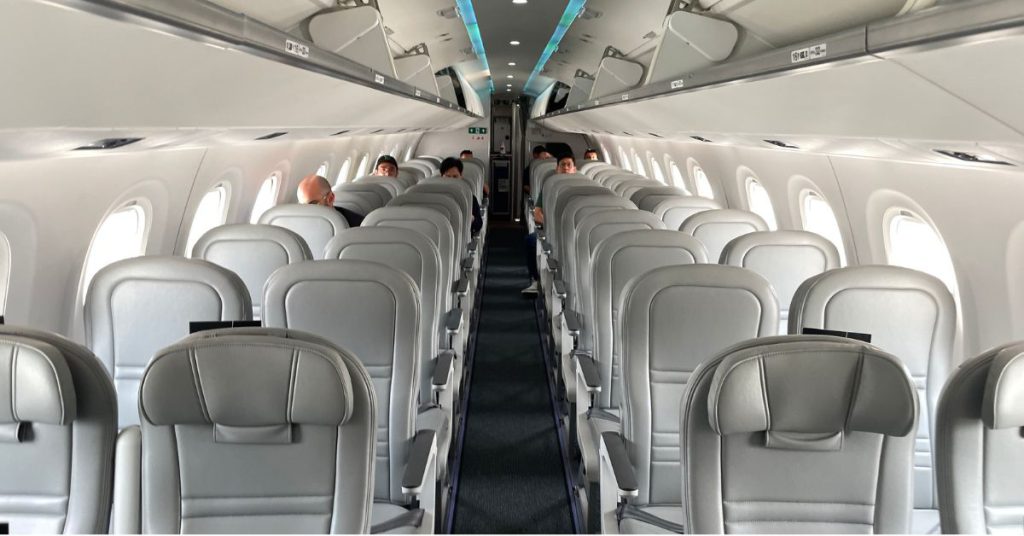 Image Credit: Vulcan Post
Image Credit: Vulcan PostFor one, the demo plane offered different seat pitches (the distance from any point on one seat to the exact same point on the seat in front or behind it), but SKS Airways’ E195-E2 will be configured in a two-class layout offering a 33-inch seat pitch and a 29.5-inch seat pitch. The emergency exit row will sport a 39-inch seat pitch.
According to the release, the SKS Airways E195-E2 aircraft are currently being customised and fitted out by Embraer in São José dos Campos, Brazil.
Speaking to the SKS Airways team, we were told that the Embraer deliveries are slated to happen next January, and the team aims to start operating them later in the year, perhaps as early as March.
The improved connectivity will certainly make for an easier travel experience, especially for those working outstation who want to visit their hometowns more conveniently.
Learn more about SKS Airways here. Read other articles we’ve written about Malaysian startups here.
 KickT
KickT 











